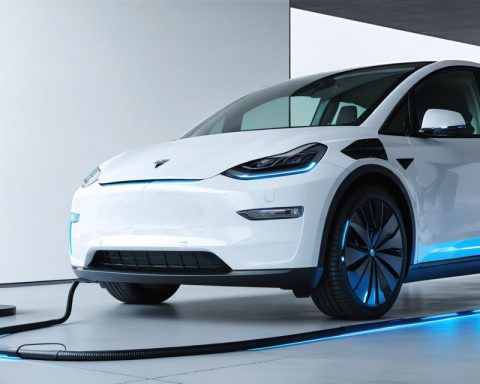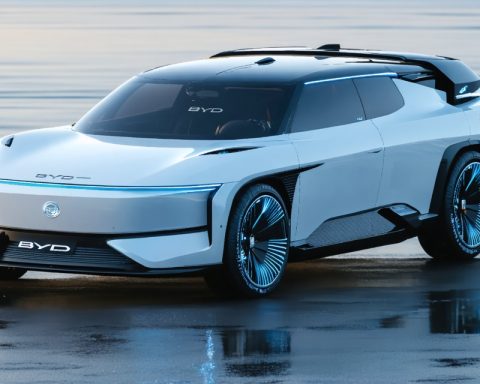- Apartment residents in urban centers face significant barriers to at-home EV charging, hindering broader electric vehicle adoption.
- A report by Clean Energy Canada highlights the need for policy changes to make EV readiness mandatory in new apartment constructions.
- Retrofitting existing structures for EV chargers is costly, making it essential to future-proof new buildings.
- Quebec leads with regulations for multi-unit EV infrastructure, while British Columbia is progressing slowly across municipalities.
- Sustainable urban planning and policy reforms are crucial to ensuring equal access to EV charging for renters and homeowners.
- The shift to electric transportation promises environmental benefits without compromising convenience or time efficiency.
Abhay Gambhir has a problem. His sleek Tesla, which he adores, sits parked downtown in the heart of Vancouver. Yet, each time the battery runs low, Gambhir embarks on a frustrating journey south to Richmond to juice up at a public charger. He lives in an apartment, like 60% of Metro Vancouver’s residents, and despite his desire to install a personal EV charger, his landlord remains silent on the matter.
Gambhir’s predicament underscores a significant barrier to electric vehicle (EV) adoption in urban centers: the lack of accessible at-home charging solutions for apartment dwellers. This challenge is vividly illustrated in a recent report by Clean Energy Canada, an influential think tank from Simon Fraser University.
Clean Energy Canada’s report paints a stark picture. The municipalities with the highest rates of EV adoption in Metro Vancouver share a common trait: they primarily consist of single-detached homes, where residents can easily charge their cars overnight. In stark contrast, apartment residents face logistical hurdles that discourage the switch to cleaner, electric transportation.
The vivacious energy of Rachel Doran, vice-president of policy and strategy at Clean Energy Canada, highlights the urgent need for a strategic overhaul. Her team advocates for a sweeping policy that makes EV readiness mandatory in new apartment constructions and pushes the retrofitting of existing structures. Doran emphasizes that retrofitting is exponentially more expensive, underscoring the financial wisdom of future-proofing new buildings from the get-go.
Quebec stands as a beacon of progress, leading the way with regulations that ensure new multi-unit buildings are fully prepared for EV installation. Meanwhile, British Columbia lags behind with less comprehensive directives, though strides are being made in various municipalities.
The broader implications are vast. If the transition to electric vehicles is to gain momentum, particularly in dense urban environments, the infrastructure must evolve in tandem. The vision of fleets of silent, emission-free vehicles cruising Vancouver’s streets hinges on the ability to charge them conveniently.
As governments visualize a sustainable future, the message from Clean Energy Canada is clear: break down the charging barriers. Urban planning and policy should empower renters and homeowners equally, ensuring that electric freedom isn’t confined to those who live in detached houses.
For Gambhir and countless others, the electrification of personal transportation should not mean a sacrifice of time and peace of mind. Instead, it should symbolize an embrace of innovation, convenience, and environmental stewardship. Unlocking this future requires bold moves now.
The Hidden Barrier to EV Adoption: Why Charging Infrastructure Must Evolve
Understanding the Charging Dilemma for Apartment Dwellers
Electric vehicles (EVs) are hailed as a key solution to reducing urban emissions, yet for many apartment residents like Abhay Gambhir in Vancouver, accessing convenient EV charging remains a significant hurdle. The crux of this challenge lies in the lack of accessible home charging solutions in residential buildings, a problem that is widely overlooked in urban planning.
Why Charging Infrastructure Matters
1. Real-World Use Cases: For residents of apartments or multi-unit dwellings, the absence of a personal charging station can turn the simple task of recharging an EV into a logistical ordeal. Much like Gambhir’s situation, this often involves lengthy trips to public charging locations, causing inconvenience and dissuading potential EV buyers.
2. Market Forecasts & Industry Trends: According to the International Energy Agency (IEA), the global EV market is expected to expand significantly, with EV sales projected to reach 23 million by 2030. As urban populations grow, the demand for EVs in densely populated areas will increase, underscoring the urgent need for adaptable charging solutions.
3. Comparative Analysis: When comparing EV adoption rates, Quebec stands out due to its progressive mandate that new buildings be pre-wired for EV charging. Industry reviews indicate that such policies are instrumental in accelerating adoption and providing a seamless transition for consumers contemplating the switch to electric vehicles.
Strategic Solutions and Policy Recommendations
1. Promote EV-Ready New Constructions: Governments and urban planners can draw lessons from Quebec by implementing regulations that require new multi-unit residential buildings to be equipped with EV charging infrastructure. This proactive approach is not only cost-effective but crucial for future-proofing urban areas.
2. Support Retrofits: Although retrofitting existing buildings with EV charging capabilities can be costly, strategic subsidies and grants can alleviate financial burdens, stimulate adoption, and foster equitable access.
3. Encourage Landlords: Incentivizing landlords to install EV chargers can include tax breaks, financial incentives, or policy measures ensuring renters have equal opportunities to embrace clean technologies.
Overcoming Limitations and Controversies
While the emphasis on EV infrastructure in urban areas is promising, challenges remain, such as grid capacity and initial installation costs. Collaborations between utility companies, government bodies, and the private sector are critical in developing sustainable and scalable solutions.
Pros & Cons Overview
Pros:
– Reduces emissions and dependence on fossil fuels.
– Enhances convenience and accelerates EV adoption among urban residents.
– Promotes cost-effectiveness over time with reduced fuel costs.
Cons:
– High initial investment for infrastructure retrofitting.
– Potential grid-related challenges requiring energy management solutions.
Insights & Predictions
As urban areas increasingly embrace sustainable transportation solutions, the integration of comprehensive EV charging infrastructure will likely become standard practice. Industry experts suggest that investing in these technologies now will yield substantial environmental, economic, and social benefits in the future.
Actionable Recommendations
1. Investigate available grants or incentives in your area for EV infrastructure development.
2. Collaborate with your building management or landlord to discuss and plan EV charging installations.
3. Advocate for local policy changes by voicing the need for improved EV infrastructure to decision-makers and community leaders.
For more information on sustainable urban planning and electric vehicle resources, visit Clean Energy Canada.
Incorporating these strategies and insights into urban planning will be crucial as we move towards a more sustainable transportation future, breaking down barriers for all potential EV adopters.














